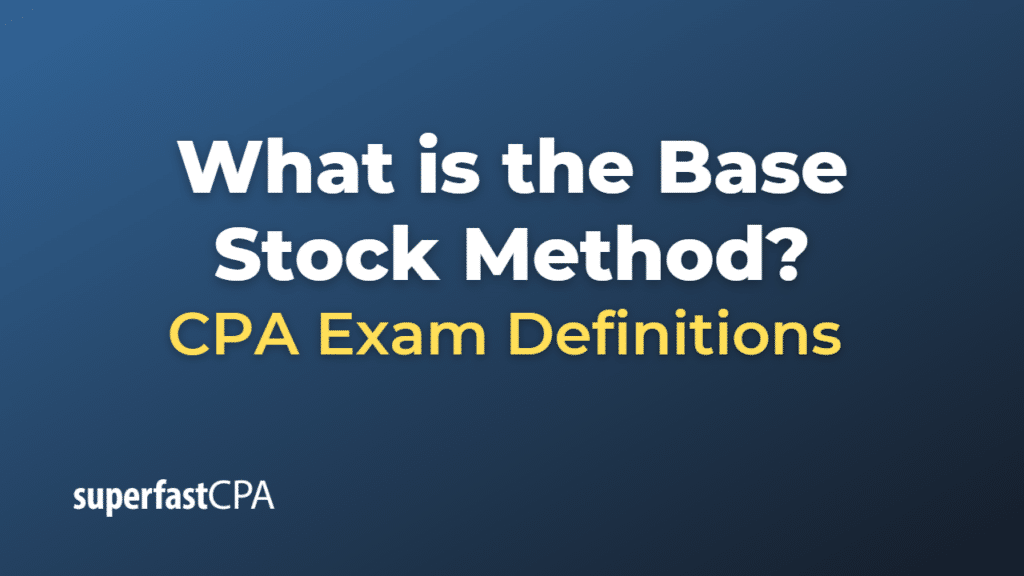Base Stock Method
The Base Stock Method is an inventory management technique used to determine the appropriate reorder point for a particular item. It involves maintaining a minimum level of inventory (known as the base stock) at all times, while ordering additional stock to replenish the inventory as it is consumed. The primary goal of the Base Stock Method is to balance the need for meeting customer demand with managing inventory costs.
Under the Base Stock Method, a company establishes a base stock level for each item in its inventory, based on factors such as historical sales data, lead times, order quantities, and desired level of customer service. The company then monitors its inventory levels continuously and places new orders to replenish the stock as needed, ensuring that the base stock level is maintained.
When using the Base Stock Method, the reorder point is typically calculated as follows:
Reorder Point = Base Stock Level + Lead Time Demand
Here, the “Lead Time Demand” represents the number of units that are expected to be sold during the lead time, which is the time it takes for a new order to be received from the supplier.
By implementing the Base Stock Method, companies can reduce the risk of stockouts, ensure that customer demand is met, and avoid overstocking, which can lead to increased carrying costs and potential obsolescence.
It is important to note that the Base Stock Method may not be suitable for all types of businesses or inventory items, particularly those with highly variable demand or lead times. In such cases, alternative inventory management techniques, such as the Economic Order Quantity (EOQ) model or the Just-in-Time (JIT) approach, may be more appropriate.
Example of the Base Stock Method
Let’s consider a fictional example involving a retail store called “Healthy Foods,” which sells organic food products.
Healthy Foods has determined that it needs to maintain a base stock level of 100 units for a popular brand of organic peanut butter. The lead time for receiving new shipments of peanut butter from the supplier is 10 days, and the store typically sells an average of 10 units per day.
Using the Base Stock Method, Healthy Foods calculates the reorder point as follows:
Reorder Point = Base Stock Level + Lead Time Demand
Reorder Point = 100 units (base stock) + (10 units/day × 10 days) = 200 units
This means that Healthy Foods should place a new order with the supplier when the inventory level of organic peanut butter drops to 200 units. The reorder point ensures that the store will have sufficient stock to cover customer demand during the 10-day lead time while maintaining the desired base stock level.
Healthy Foods continuously monitors its inventory levels and places orders with the supplier as needed to maintain the base stock level and meet customer demand. By implementing the Base Stock Method, the store can effectively manage its inventory, reduce the risk of stockouts, and avoid overstocking, which can lead to increased carrying costs and potential obsolescence.
This example illustrates the concept of the Base Stock Method in the context of inventory management and demonstrates how it can help businesses determine the appropriate reorder point for their inventory items, balancing the need to meet customer demand with managing inventory costs.













